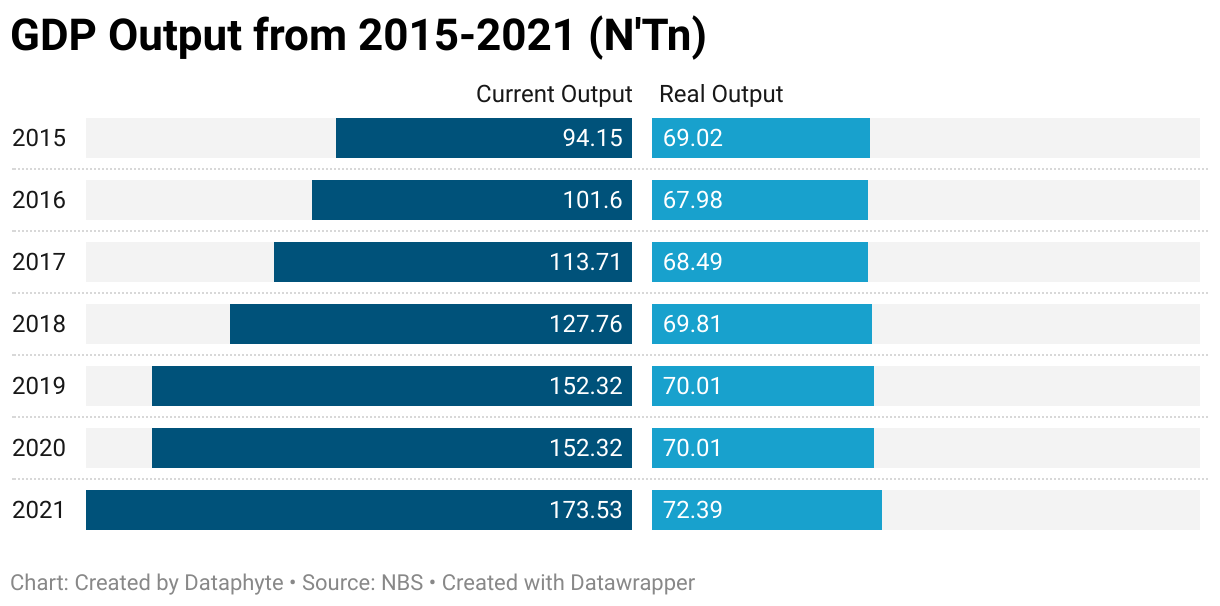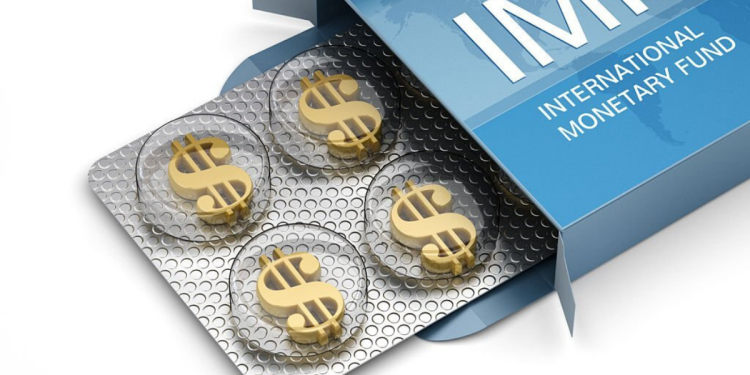Nigeria moved two points up in the International Monetary Fund (IMF) ranking of countries’ GDP for current market prices. However, it maintained its 2021 rank on Purchasing Power Parity (PPP) of the GDP.
For the current market prices ranking, the output of countries is converted to a universal currency on which comparison is made. This ranking is based on the size of output generated by countries. PPP ranking measures the quantity of similar basket of goods that the output can purchase across countries.
The country moved from 29th in 2021 based on current market prices to 27th in 2022.
Though the country recorded an excellent index in its GDP comparison globally, the progress cannot be said to reflect on the economy and livelihood of the people.
Nigeria’s economy continues to grow back to the pre-pandemic era as the country ended 2021 with a 3.4% year-on-year GDP growth rate.
The country has experienced increased output over the years from 2015 to 2021, though it stayed the same in 2019 and 2020. The current output of Nigeria increased from N152.32 trillion in 2020 to N173.53 trillion in 2021.
Real output after price deflator also increased, though not as much as the current prices. Real output is the constant value of the current output after inflationary adjustments. It remained the same in 2019 and 2020 but later increased from N70.01 trillion in 2020 to N72.39 trillion in 2021.

This economic performance is reported as outstanding in comparison to that of world economies.
Nigeria has been improving in its current price GDP ranking moving from 2017, ranking 32nd to 2022, ranking 27th.
However, when ranked based on the Purchasing Power Parity (PPP), the country has been going up and down over the last five years. PPP is a metric that compares the currencies of different countries using the basket of goods approach. It is the idea that goods in one country will cost the same in another country once their exchange rate is applied.
Thus ranking Nigeria’s output per PPP, the country’s rank stayed at 26th in both 2012 and 2022. It fluctuated from 25th in 2018 to 23rd in 2019, it moved to 25th in 2020 before attaining its current 26th position.

Despite these good showings on the IMF GDP ranking, they do not necessarily reflect the economic health of the people. GDP estimates, which are used to measure the economy’s health, have their limitations.
GDP figures fail to explain income distribution and inequality in the economy. Thus, it cannot tell if the output is from a majority or just a contribution by a few persons. Also, it does not reflect the sustainability of the economy nor the effect of the production process on people’s health.
The GDP does not reflect or measure anything more than productivity. It was designed to be a monetary measure of economic performance rather than general performance.
The diverse socio-economic challenges faced by Nigerians ranging from poverty to unemployment to the intractable insecurity situation across all geopolitical zones tell of a reality that casts a shadow on the country’s GDP performance.




